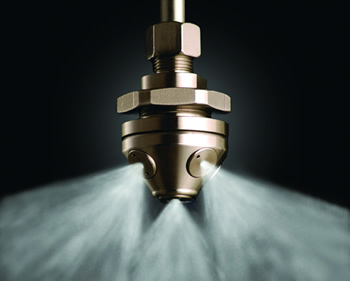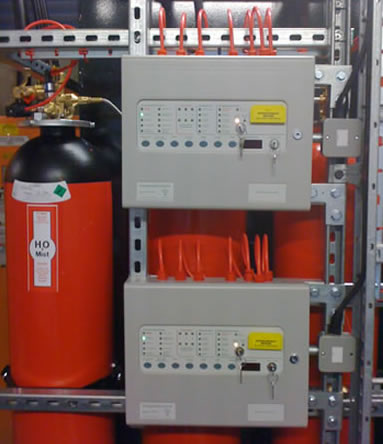Introduction to Water Mist
The fire suppression ability of fine water fog has been recognised for many years. This performance is due to the large total surface area of the droplets combined with the high speed at which they convert to steam and absorb the energy of the fire.
The average water fog droplet has a total surface area at least 100 times greater than that obtained by a conventional sprinkler system for the same volume of water. Having extinguished a fire, water fog will continue to cool the source preventing re-ignition and at the same time dramatically reducing the harmful products of combustion.
Water fog can penetrate flue gases by forcing water at high pressure through specially developed nozzles arranged on spray or sprinkler heads. Water fog is propelled at a velocity great enough to penetrate the flue gases of even a flashover fire whilst presenting no risk to personnel in the immediate vicinity. Water fog is harmless to personnel and will operate in open areas.
Water Mist Systems Explained
One of the most effective ways of fighting fire is to provide quick and effective cooling at the source of the fire. To achieve cooling, suppression and extinguishing of a fire using water in a conventional way via a hose or standard sprinkler often requires many thousands of litres of water. The primary reason for this is that the vast majority of the water used is wasted; this can be seen by the amount of pools of water left on the floor, known as 'run off'. This is because only the surface area of the water drop or stream comes into contact with the energy from the fire (the heat) the rest is wasted.


Fire Fighting with High Pressure Water Mist
By atomising the water into a fine mist (water droplets within the range of 60-100 micron size) the droplets immediately convert to steam and absorb the energy, quickly extinguishing and controlling the fire. Once the fire has been extinguished the droplets being discharged continue the effect by removing heat from the fuel source (i.e. Liquid Fuel, Oil, Plastics, Fabrics, Wood, Cable & Paper etc) thus preventing re-ignition. Additionally this leads to a localised reduction in oxygen from the flame front, which creates a local inert atmosphere as it starves the combusting fuel of Oxygen.
Important note: This only affects the fire at the flame base and does not reduce oxygen levels elsewhere within the risk area. By utilising these methods, Water Mist systems use minimal amounts of water, reducing storage or water supply requirements, and are able to control the fire rapidly.